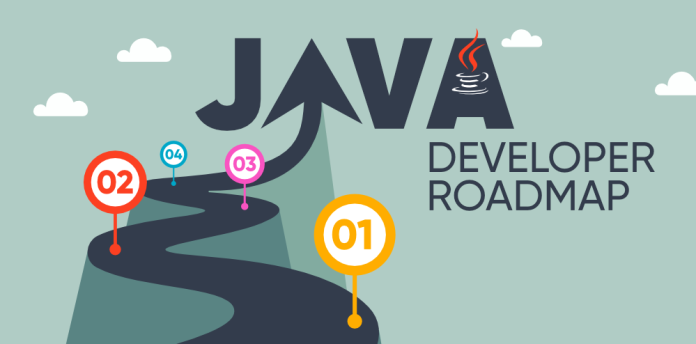By the end of 2022, Java was ranked among the top 3 most popular programming languages. Thus, the future of Java appears bright, showing us that there is a strong demand for Java experts like full-stack Java developers. So, let’s understand the Java developer roadmap for 2023 and see how to best leverage Java expertise.
Introduction to java
Java is a programming language first released by Sun Microsystems in 1995. It is an object-oriented, class-based, general-purpose language majorly used for coding both web and mobile applications. The compiled code is compatible with most operating systems, comprising Windows, Mac OS, and Linux.
Java developer roadmap
Let’s understand the roadmap to become a professional full-stack Java developer. These developers can work proficiently with front-end and back-end software. And this expertise puts them in high demand among Java development services. Full-stack developers can do both types of development work.
An Overview of Front-end development
Addressing the application’s user interface development, the least a programmer’s skill set include is expertise of the markup languages HTML, CSS, and JavaScript.
1. HTML
HTML is the standard language used to create web pages. It focuses on the basic structure of a web page. For example, HTML supports the use of headings, tables, text, lists, photos, etc. on a web page. In simple words, HTML tells a web browser how a page is displayed.
2. CSS
CSS stands for Cascading Style Sheets. It is used to describe a specific presentation of a document marked up through HTML or XML. The language defines the visual structure, layout, and web page aesthetics.
JavaScript
It is the text-based scripting language that is used to update content, create images, and control images while creating web-based applications. It can be used to add interactive behavior on a web page, including playing audio or video, zooming in or out, etc.
An overview of Back-end development
Core Java, and Java Enterprise Edition, which comprises JSON API, REST, asynchronous, JPA, and server-sent events are all important for the application’s back-end development. A full-stack Java programmer should have a firm grasp of these fundamentals.
Core Java
Core Java is a tool used to create general-purpose applications. The development of such generic programs is the major goal. Core Java refers to Java Standard Edition, which prioritizes Object-oriented programming(OOP). The key concepts of Core Java comprise inheritance, encapsulation, polymorphism, and abstraction.
Spring Framework
Using the Spring framework makes it simple to build Java EE applications. Developers working with Java EE need to understand how to use the Spring framework. It is a platform that guides developers in creating Java apps by offering essential infrastructure support. While understanding Spring Framework as part of the Java Full Stack developer roadmap, analyze the following concepts:
- Auto wiring
- Dependency Injection
- Bean Life Cycle
- Aspect Oriented Programming
- Model View Controller
Hibernate Framework
Hibernate is an open-source solution that supports the mapping of object-oriented domain models to relational databases. It follows the JPA (Java Persistence API) specification for data persistence. Being an object persistence framework, it stands between your regular Java objects and the database server, automatically saving your objects by applying the correct O/R techniques and patterns.
Wrapping Up
As you go through the Java Full Stack Developer roadmap, you can see yourself getting hired by leading software development companies. Hope you find the blog informative and helpful. We have already shared crucial details that you must know about becoming a full-stack Java developer. Most business enterprises hire Java developer that has the skills to become Full Stack Java Developers.
Apart from that if you want to know about Coaching in virtual reality then visit our Tech category.







